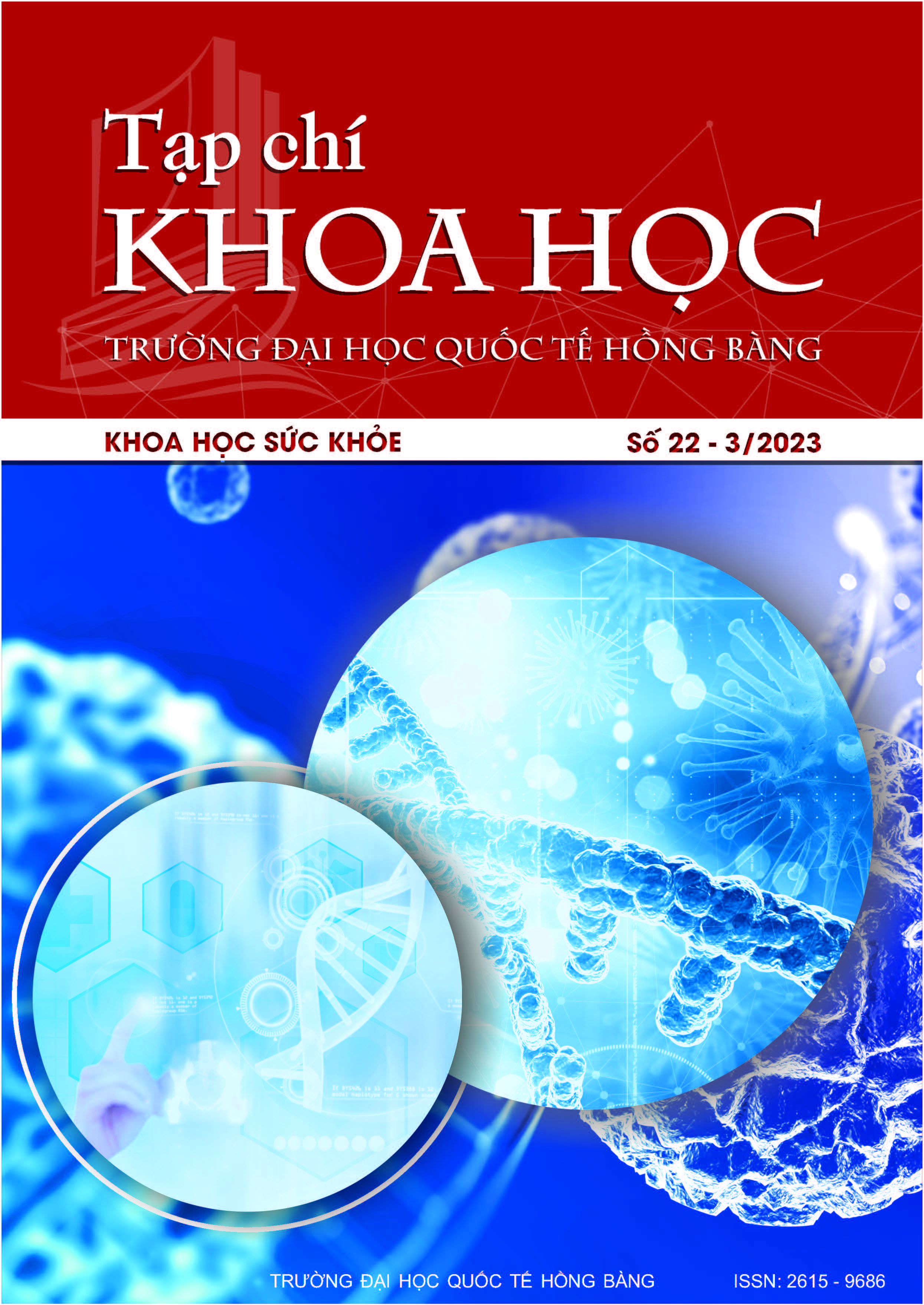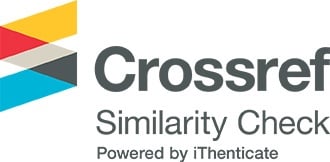Nghiệm pháp tự phát huỳnh quang trên tổn thương bạch sản
Các tác giả
DOI: https://doi.org/10.59294/HIUJS.22.2023.296Từ khóa:
tự phát huỳnh quang, bạch sản, phát hiện sớmTóm tắt
Thiết bị tự phát huỳnh quang đánh giá khả năng tự phát huỳnh quang của mô, phát hiện sớm tiền ung thư và ung thư hốc miệng. Mục tiêu nghiên cứu so sánh đặc điểm tổn thương trên hình ảnh tự phát huỳnh quang với khảo sát dưới ánh sáng trắng. 939 mẫu tại TP.HCM, Long An, Đồng Nai từ 01/2016 đến 01/2017 được thu thập, có 32 trường hợp bạch sản niêm mạc miệng được khám với ánh sáng đèn thông thường và nghiệm pháp tự phát huỳnh quang VELscope®Vx, trường hợp nghi ngờ được tiến hành sinh thiết và xét nghiệm mô bệnh học để chẩn đoán xác định. Kết quả tỉ lệ bạch sản mất phát huỳnh quang cho kết quả nghiệm pháp tự phát huỳnh quang dương tính là 56.2%, tỉ lệ này ở bạch sản không đồng nhất (64,3%) cao hơn ở bạch sản đồng nhất (50%) nhưng sự khác biệt không có ý nghĩa thống kê (p > 0.05). Điểm khác biệt là kích thước tổn thương trên hình ảnh tự phát huỳnh quang thường lớn hơn nhìn thấy trên lâm sàng (50.1%). Kết quả mô bệnh bạch sản mất phát huỳnh quang cho tỉ lệ loạn sản cao 60%. Nghiệm pháp tự phát huỳnh quang đơn giản, không xâm lấn, hỗ trợ lâm sàng phát hiện và chẩn đoán bạch sản, đánh giá kích thước tổn thương ở bạch sản mất phát huỳnh quang tốt hơn nhìn dưới ánh sáng trắng.
Abstract
Tissue autofluorescence device allows clinical observation of direct fluorescence in oral cavity for early recognition and diagnosis of potential malignant and premalignant lesions. The aim of this research is to compare autofluorescence examination and conventional white light examination on oral leukoplakia. 939 participants having risk factors were included in high-risk population in Southern Vietnam from January 2016 to January 2017. 27 participants, diagnosed with leukoplakia based on the definition of WHO 1980, were selected. Clinical and autofluorescence imagings using VELscope® were taken, read by main researcher and verified by an oral pathology expert. The loss of autofluorescence was considered as FV (fluorescence visualization) (+). By 51.% of leukoplakia cases showed as FV(+) while the others brightened in autofluorescence examination. Heterogeneous leukoplakia revealed FV(+) by 66.7%, higher than in 40% that of homogenous leukoplakia (p > 0.05). The size between white light examination and autofluorescence examination appeared no change in 44.4%, while the significant increased size through direct autofluorescence occurred in 48.1%, implying that this technique allows clinicians to estimate leukoplakias beyond their visible borders. Meanwhile, there is no significant data on the border of lesions between two examinations (p < 0.05). Biopsy showed dysplasia in 40% and inflammation in 60% of selected FV(+) cases. Leukoplakias can be seen as loss of fluorescence and brightening respecting to their histopathology patterns: hyperkeratosis, hyperplasia, mucosal inflammation and different stage of dysplasia. Autofluorescence technique could clarify leukoplakia characteristics to supplement conventional clinical examination.
Tài liệu tham khảo
[1] D. Elvers et al., "Margins of oral leukoplakia: autofluorescence and histopathology," (in eng), Br J Oral Maxillofac Surg, vol. 53, no. 2, pp. 164-9, Feb 2015, doi: 10.1016/j.bjoms.2014.11.004.
[2] H. Hanken et al., "The detection of oral pre- malignant lesions with an autofluorescence based imaging system (VELscope™) - a single blinded clinical evaluation," (in eng), Head Face Med, vol. 9, p. 23, Aug 23 2013, doi: 10.1186/1746-160x-9-23.
[3] T. Amagasa, M. Yamashiro, and H. Ishikawa, "Oral Leukoplakia Related to Malignant Transformation," Oral Science International, vol. 3, no. 2, pp. 45-55, 2006/11/01/ 2006, doi: https://doi.org/10.1016/S1348-8643(06)80001-7.
[4] K. Babiuch, M. Chomyszyn-Gajewska, and G. Wyszyńska-Pawelec, "The use of VELscope® for detection of oral potentially malignant disorders and cancers - a pilot study," Medical and Biological Sciences, vol. 26, 01/01 2012, doi: 10.2478/v10251-012-0069-8.
[5] D. N. Louis et al., "The 2021 WHO Classification of Tumors of the Central Nervous System: a summary," (in eng), Neuro Oncol, vol. 23, no. 8, pp. 1231-1251, Aug 2 2021, doi: 10.1093/neuonc/noab106.
[6] N. Ramanujam, "Fluorescence spectroscopy of neoplastic and non-neoplastic tissues," (in eng), Neoplasia, vol. 2, no. 1-2, pp. 89-117, Jan-Apr 2000, doi: 10.1038/sj.neo.7900077.
[7] "Guide to epidemiology and diagnosis of oral mucosal diseases and conditions," Community Dentistry and Oral Epidemiology, vol. 8, no. 1, pp. 1-24, 1980, doi: https://doi.org/10.1111/j.1600-0528.1980.tb01249.x.
[8] S. Petti, "Pooled estimate of world leukoplakia prevalence: a systematic review," Oral Oncology, vol. 39, no. 8, pp. 770-780, 2003/12/01/ 2003, doi: https://doi.org/10.1016/S1368-8375(03)00102-7.
[9] A. L. Huỳnh, "Các tổn thương tiền ung thư của niêm mạc miệng: khảo sát dịch tễ học, thói quen ảnh hưởng và biện pháp dự phòng," Luận án Chuyên khoa II, Đại học Y Dược TP.HCM, 1995.
[10] D. K. Ngo, "Tổn thương tiền ung thư và ung thư miệng ở miền Nam Việt Nam: Khảo sát dịch tễ và các yếu tố nguy cơ," Tạp chí Y học TP. Hồ Chí Minh vol. 13, no. 2, pp. 128-134, 2000.
[11] C. F. Poh, C. E. MacAulay, L. Zhang, and M. P. Rosin, "Tracing the "at-risk" oral mucosa field with autofluorescence: steps toward clinical impact," (in eng), Cancer Prev Res (Phila), vol. 2, no. 5, pp. 401-4, May 2009, doi: 10.1158/1940-6207.Capr-09-0060.
[12] N. C. Chaitanya et al., "A meta-analysis on efficacy of auto fluorescence in detecting the early dysplastic changes of oral cavity," South Asian journal of cancer, vol. 8, no. 04, pp. 233-236, 2019.
[13] F. P. Koch, P. W. Kaemmerer, S. Biesterfeld, M. Kunkel, and W. Wagner, "Effectiveness of autofluorescence to identify suspicious oral lesions-a prospective, blinded clinical trial," (in eng), Clin Oral Investig, vol. 15, no. 6, pp. 975-82, Dec 2011, doi: 10.1007/s00784-010-0455-1.
[14] A. Villa and S. B. Woo, "Leukoplakia—A Diagnostic and Management Algorithm," Journal of Oral and Maxillofacial Surgery, vol. 75, no. 4, pp. 723-734, 2017, doi: 10.1016/j.joms.2016.10.012.
[15] S. S. Napier and P. M. Speight, "Natural history of potentially malignant oral lesions and conditions: an overview of the literature," (in eng), J Oral Pathol Med, vol. 37, no. 1, pp. 1-10, Jan 2008, doi: 10.1111/j.1600-0714.2007.00579.x.
[16] N. Bhatia, M. A. Matias, and C. S. Farah, "Assessment of a decision making protocol to improve the efficacy of VELscope™ in general dental practice: a prospective evaluation," (in eng), Oral Oncol, vol. 50, no. 10, pp. 1012-9, Oct 2014, doi: 10.1016/j.oraloncology.2014.07.002.
Tải xuống
Tải xuống: 118











